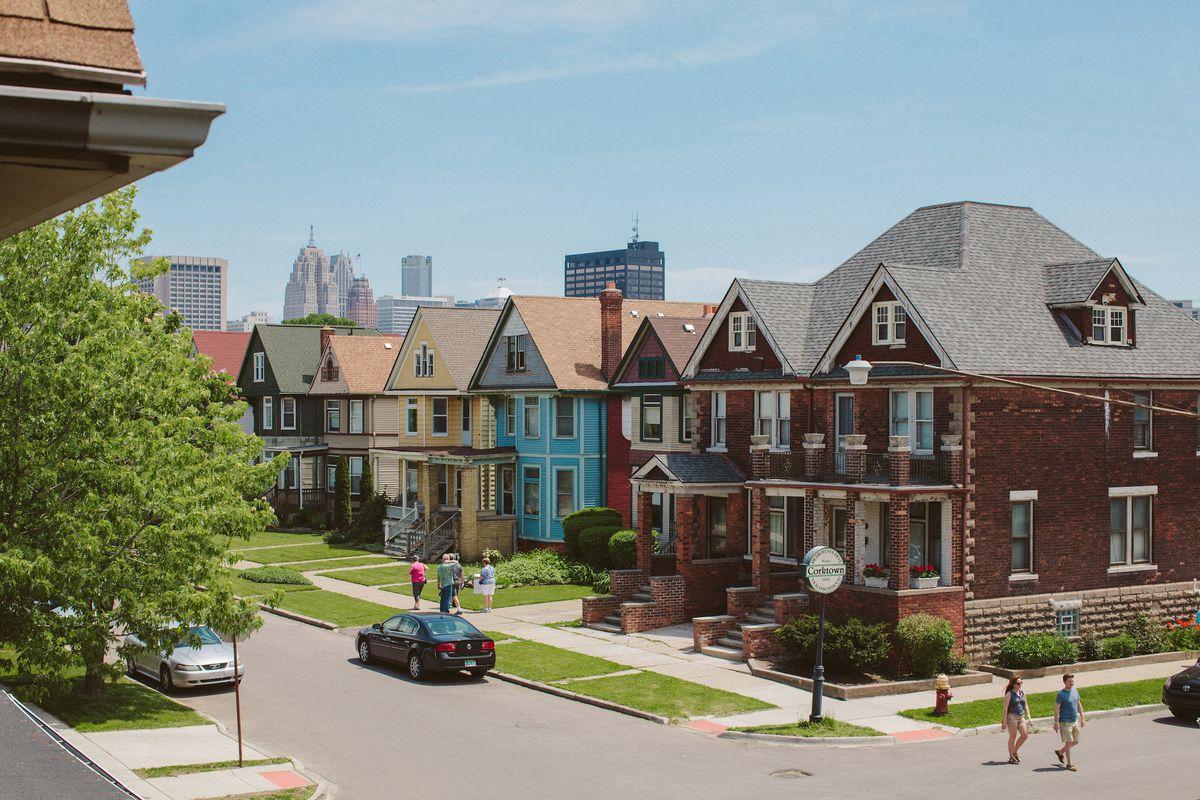
Short Summary
Detroit is a vibrant city, known as a major cultural center for its contributions to music and providing a home for art, design, and architecture. It is also a minority-majority city with a population of almost 79 percent Black or African American residents. Although Detroit’s population has continued to decline since 1950, the decline has slowed in recent years. Meanwhile, development has continued to change the landscape. Between 1990 and 2000, land in the Southeast Michigan Council of Governments (SEMCOG) region was developed three times faster than the population grew. According to the City of Detroit Planning Department, there is approximately 22,000 acres of urban forest and 24.3% canopy coverage out of 89,000 total city acres. Potential impacts from climate change on trees and green spaces are a prominent concern, as the city is projected to experience increased temperatures, more frequent and intense precipitation, as well as fluctuating lake levels that threaten both human and environmental health. Climate change challenges may present opportunities for land managers and other decision-makers to develop adaptation strategies, further engage with their communities, create new partnerships and programs, expand their volunteer base, and make investments in resilient landscapes.
Tree Species Vulnerability
Species distribution modeling indicates that the evolving climate will alter the suitable habitat available for diverse tree species within the Detroit region. A comprehensive examination of the climate change susceptibility of tree species in the Detroit region, encompassing their adaptive capabilities and zone suitability under both low (RCP 4.5) and high (RCP 8.5) emissions scenarios, is available in the Detroit Urban Forest Vulnerability Assessment and Synthesis. Climate change vulnerability of urban trees, including adaptive capacity and zone suitability under low and high emissions scenarios, is also outlined in the tree species handout below.


Climate Change Impacts
Detroit has been warming at a rate of about 0.4℉ per decade since 1960 and the average temperature is projected to increase in each season under a range of climate scenarios compared to the 1980-2009 mean. Precipitation in Detroit has been increasing by 0.95 inches per decade since 1960. While precipitation projections vary by season and climate scenario, spring precipitation is expected to increase in each. Extreme heat and heavy precipitation events are expected to increase in intensity and become more frequent. Assuming a drastic reduction in global GHG emissions, the hardiness zone is projected to shift from zone 6 (-23.3°F to -17.8°F) to zone 7 (-17.7°F to -12.2°F) by mid-century and the heat zone is projected to shift from zones 4 and 5 (>14-30 and >30-45 days exceeding 86°F) to zone 7 (>61-90 days exceeding 86°F) by mid-century. More information about climate change impacts in the Detroit region is available below in the draft vulnerability assessment and key climate impacts handout. The assessment will be finalized and published in 2021.
Adaptation Demonstrations
Work With Us
To learn more about this project, contact Leslie.

